The colour of winter blues
January 11, 2024, 8:11 am , by Richard Lutz
It isn’t all black and white when it comes to cold weather, says RICHARD LUTZ
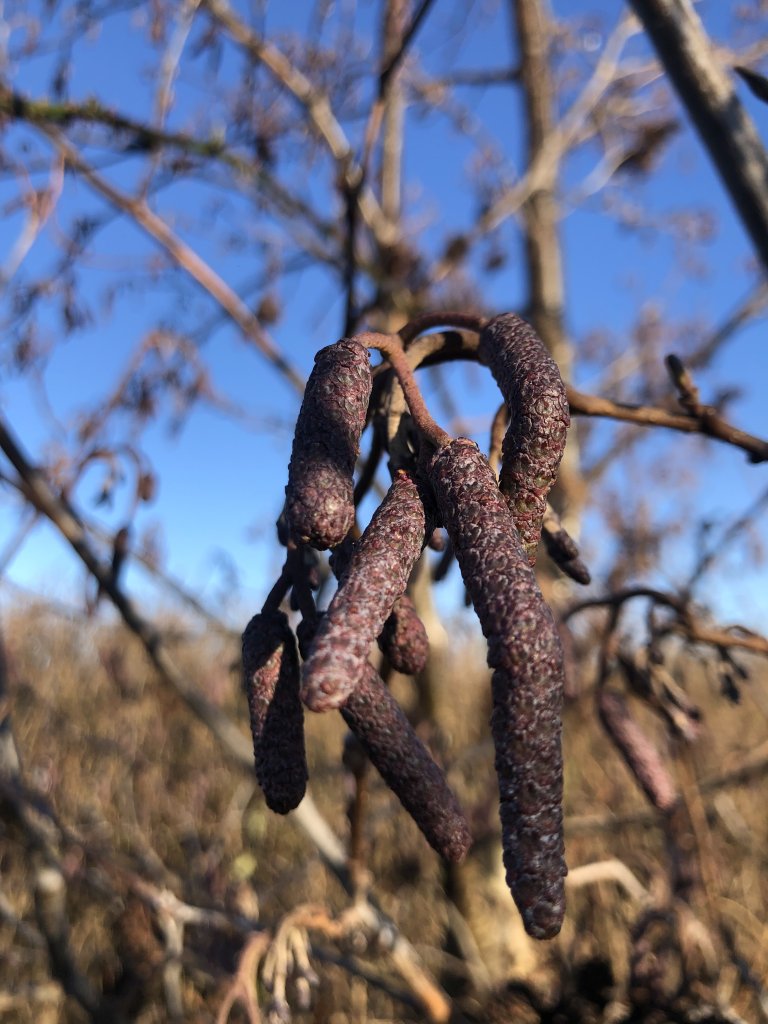
The January weather has broken free of rain, freezing mist and damp wind. It is cloudless. On the Ayrshire coast, there’s a line of folks walking north. Those walking south find out how viciously the prevailing southwest wind bites.
I stop by an alder tree. I presume it’s an alder because of those weird looking purple buds drooping from the spindly branches. They hang like pendulous earrings. Like alien corn.
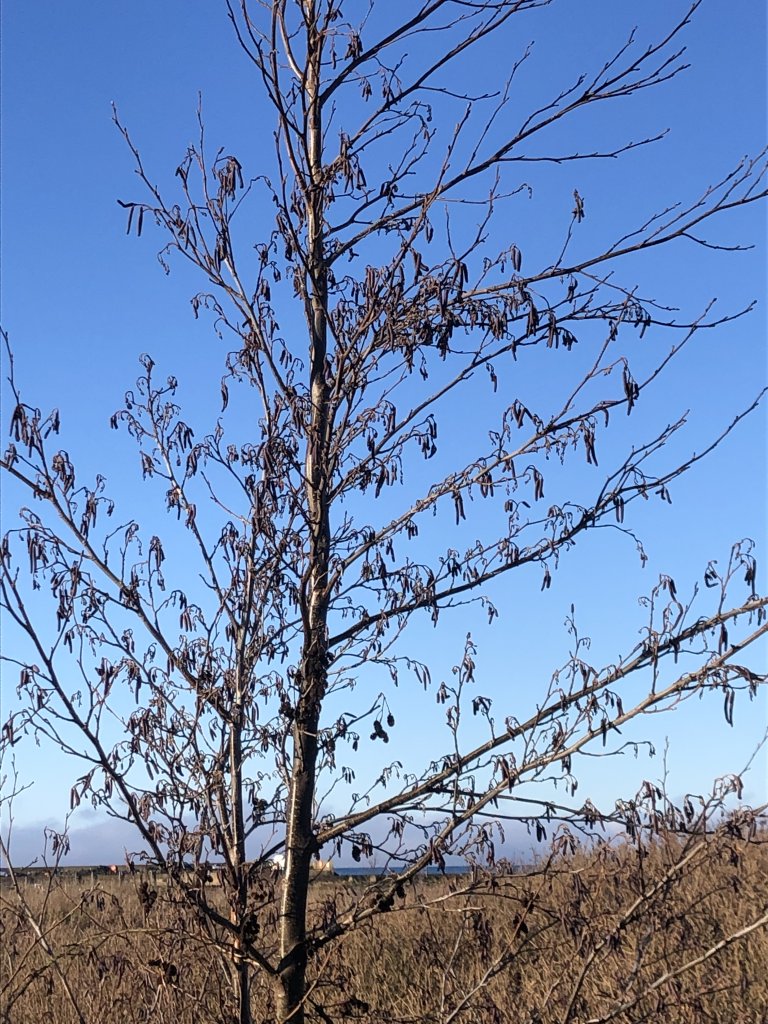
The catkins spring into flower come the warmth. Alders are happy by the shore. Or rivers or lakes for that mattter. They love the wet. They thrive in swamplands. That’s why Venice used the wood as piles to create its lagoon city.
Along this Scottish shore, the cold bright snap creates sharp shadows. It’s defined by the low sunlight.
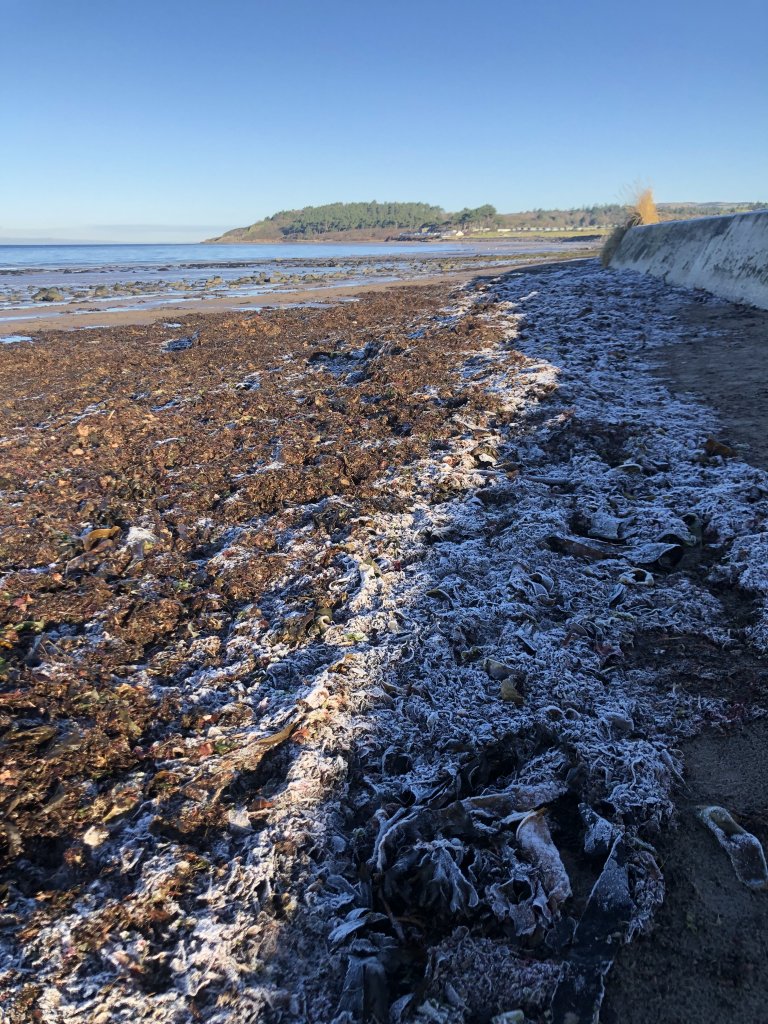
Where there’s shadow, there’s frozen seaweed. Where there’s sun, there’s seaweed warming up. Birds peck at its wealth of food. I use it for the garden. Or try to. I have no idea how much natural stuff is embedded in its brown tangle. But come February, I’ll haul it by the fish-crate to my borders. Am I overloading on potassium, nitrogen, magnesium… all the good stuff that enriches the earth?
One gardener, cautious, says it’s best to buy it by the bag from a nursery. Then you know how much richness is going into the ground. Another asks why go commercial when it’s for free on the beach? Just spray it down, he says. Not to get rid of sand. But to wash away salt. He has a robust garden, So I willingly follow his advice. It hasn’t killed my borders yet. That’s the only observation so far.
Further down, as the beach curls, the steps are frosted as they meet the frozen sand. It zigzags through truly Scottish colours- tawny brown, rust, dark green. A pooch is half hidden, carefully descending:
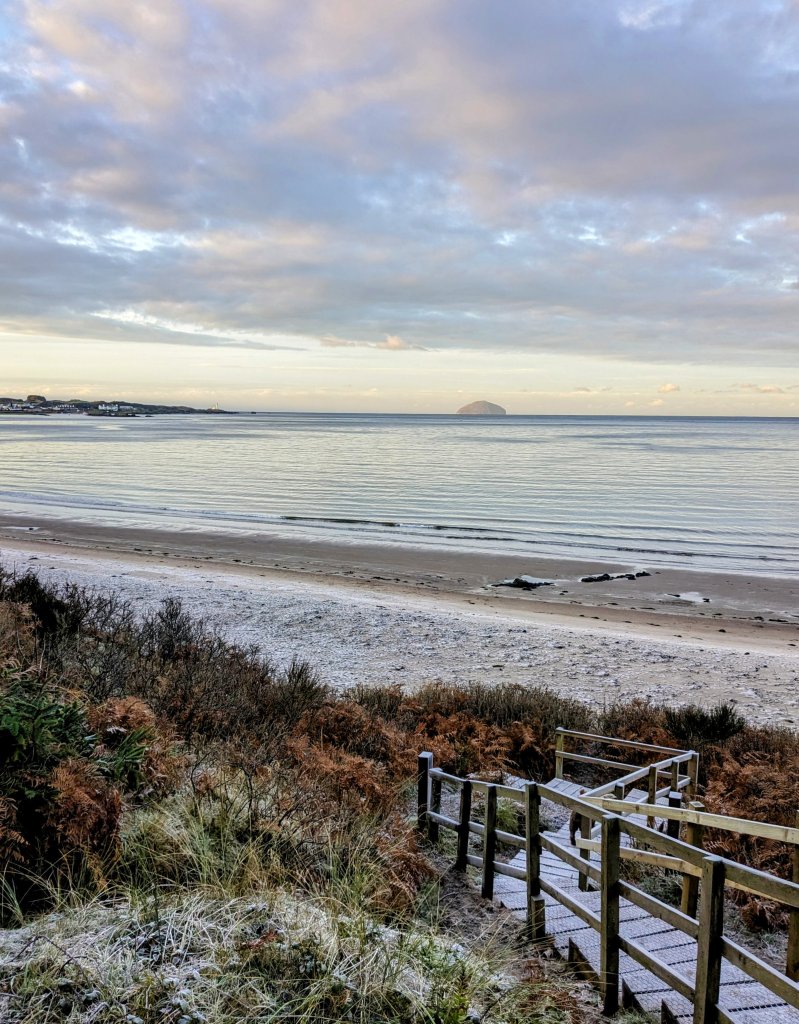
And then there’s the winter yellow:
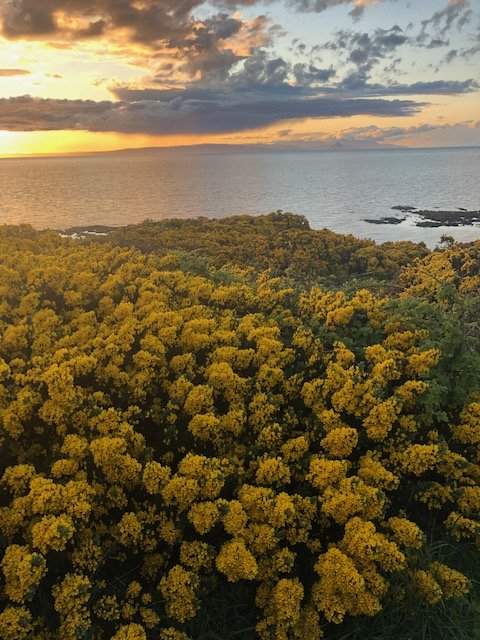
It’s the gorse that handles any weather. In summer, it throws out vanilla and coconut fragrance- a real deep beachy perfume. In winter, it stands tough and rugged against the cold, the wind, the dark northern days.
The gorse looks out to the western sky. Daylight fades at 4pm, fades with a final flash of low winter sun.

The pastel sky dips behind clouds and the lump of the 1000 foot Ailsa Crag that sits in the middle of the Clyde estuary- it’s an immovable rocky watchman. It’s frowned down on Romans, 6th century Dalriadic raiders, Irish saints, marauding Vikings as they all passed by. It’s seen Royal Navy vessels, trawlers, Manx pirates, steamships, cruise liners and nuclear submarines too.
Back in the winter harbour above, protected by that protruding finger of rocks, there are ducks, a lone swan, oyster catchers, gulls galore and a patient heron. They patrol and hunt the cold waters. There’s plenty to eat.
Photo credits:
++gorse/ harbour by janepix
++ steps by Patricia Di-Tommaso




Alan Holland
It’s curious that some cannot find any positives about Winter as its own season.
Some only really enjoy the Spring and Summer for their extravagant abundance of hope, light, warmth and colour but as you point out, look a little harder and beauty is always there to be found in Nature.
Martin McCrindle
Another evocative piece, loving the photos and your reflections!
Wendy McCrindle
We’re surrounded by beauty if we care to see ….
GB from Ayrshire
I too gather and dig seaweed into my allotment; don’t know if it does any good.
Nick Dent
I notice that you still call it Ailsa Crag…. is that what the locals say? I know it as Ailsa Craig…
Subscribe to new posts.